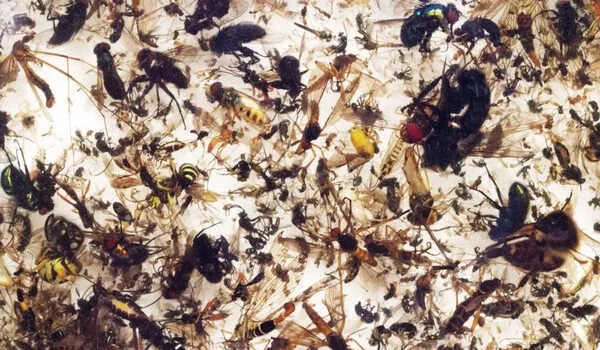According to a new study published in Nature, losses among locally more common species are driving insect decline. The meta-analysis of 923 locations worldwide, led by researchers at the German Centre for Integrative Biodiversity Research (iDiv) and Martin Luther University Halle-Wittenberg (MLU), reveals two significant trends: 1) The species with the most individuals (the highest abundance) are decreasing in number disproportionately, and 2) no other species have increased to previously seen levels. This most likely explains why there are fewer insects around now than ten, twenty, or thirty years ago.
iDiv researchers examined long-term trends in land-based insects such as beetles, moths, and grasshoppers and discovered that declines in the number of the formerly most common species have contributed the most to local insect declines. Common or abundant insect species are those that are found in the greatest numbers locally, but which species these are vary by location. The study’s findings call into question the notion that changes in insect biodiversity are caused by the extinction of rarer species.
The study comes on the heels of a recent alarm about insect loss, with researchers observing dramatic declines in the total number of insects in many parts of the world. However, little is known about the long-term trends in locally rare and abundant species. “It was obvious that this needed to be investigated,” says Roel van Klink, the study’s lead author and senior scientist at iDiv and MLU. “We needed to know if observations of declines in total insect abundance differed between common and rare species, and how this translated into changes in overall insect diversity.”
Food webs must already be rewiring substantially in response to the decline of the most common species. These species are super important for all kinds of other organisms and for the overall functioning of the ecosystem.
van Klink
More common species are losing out
Van Klink and colleagues set out to better understand insect population trends by digging into previous research. They created an insect community database using data from 106 studies collected over time periods ranging from 9 to 64 years. One Dutch study on ground beetles, for example, began in 1959 and is still ongoing today.
The researchers confirmed, using this updated database, that despite variations in the data, land-based insects from these long-term surveys are declining by 1.5% each year. To better understand this pattern, they compared the trends of species in different abundance categories and discovered that species that were most abundant at the start of the time series had the greatest average decline – around 8% per year – while rarer species declined less.
Importantly, the losses of previously dominant species were not compensated for by rises in other species, which has far-reaching implications: Abundant species are a staple food for birds and other insect-eating animals, making them essential for ecosystems. “Food webs must already be rewiring substantially in response to the decline of the most common species,” explains van Klink. “These species are super important for all kinds of other organisms and for the overall functioning of the ecosystem.”

Winners and Losers
The analysis clearly demonstrates that previously abundant insect species consistently lose the most individuals when compared to less abundant insect species. However, less abundant and rare species are also declining, contributing to local species population declines. The study discovered a 0.3% annual decrease in the overall number of species. This decline suggests that, in addition to significant losses of common species, some rare species are becoming extinct locally.
Newcomers who have successfully established themselves come out on top. Most of these new arrivals remain locally rare and replace other formerly rare insects, but they can become extremely abundant at times. One such example is the invasive Asian-Ladybeetle, which has spread throughout Europe, the Americas, and South Africa.
The authors of the paper believe that more research is needed to determine the underlying causes of these trends. Although this study did not specifically investigate potential causes, the declines are most likely linked to recent human-related impacts, such as climate change and urbanization, which are regarded as major drivers of biodiversity loss. “Insects seem to be taking a heavier hit than many other species as humans continue to dominate the planet,” says Professor Jonathan Chase, senior author of the study and professor at iDiv and MLU. “Other studies, including those our team has worked on, have not found such diversity declines at local scales from many other groups of animals and plants.”
While the study’s findings are striking, they are heavily skewed toward data on insect communities in Europe and North America. As a result, they should not be regarded as a global phenomenon. “The patterns we observed might be a best-case scenario for quantifying the real impact of people on insects,” Chase adds, referring to what scientists call the lifeboat effect. “These declines were observed in long-term data from areas that have remained largely intact, sort of like a lifeboat, rather than in areas where massive conversion of natural areas into human-dominated landscapes has occurred, such as malls and parking lots.”
















